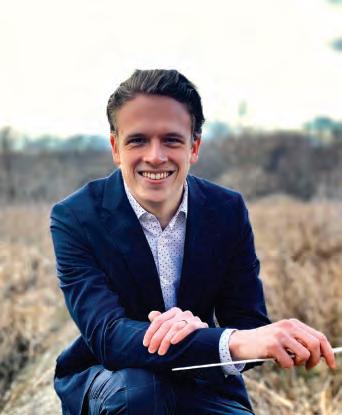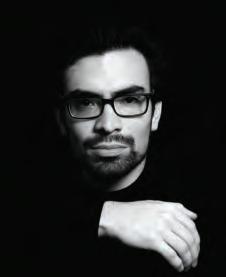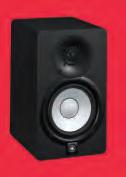










特別演出 Special Performance 葉氏兒童合唱團成員

Members of the Yip’s Children’s Choir
小鼓手 Little Drummer Boy 李俞熹 Lee Hayden 梁知行 Leung Chi-hang 聖誕火雞 Christmas Turkey 張迪堯 Cheung Tik-yiu Derrick 鄺汶斐 Kwong Man-fei 空中漫步 Walking in the Air 陳頌澄 Chan Chung-ching 鄭銥淳 Cheng Yi-shun 張迪堯 Cheung Tik-yiu Derrick 鍾思飛 Chung Sze-fay Sophie 馮端慧 Fung Tuen-wai Mavis 韓牧洋 Han Muyang 鄺汶斐 Kwong Man-fei 李悅饒 Lee Eunice Shemaryah �� Yuen Huen
Programme
Leroy Anderson
A Christmas Festival Vivaldi
The Four Seasons:Winter Allegro non molto Largo Allegro
Vaughan Williams Fantasia on Greensleeves
Katherine Davis/Ip Kim-kuok arr The Little Drummer Boy Mussorgsky/Ravel orch Pictures at an Exhibition: Ballet of the Unhatched Chicks
Mel Tormé/Robert Wells The Christmas Song
Franz Gruber/Kennedy arr Silent Night
Tchaikovsky
The Nutcracker Suite: Dance of the Sugar-Plum Fairy
Felix Bernard/Kolonovits arr Winter Wonderland
Wagner
Die Walküre: Ride of the Valkyries
Two Elegiac Melodies: Last Spring Howard Blake
Grieg
The Snowman: Walking in the Air 音樂會約長1小時30分鐘,不設中場休息
Approximately 1 hr 30 mins, with no intermission

One of Hong Kong’s flagship orchestras, Hong Kong Sinfonietta has achieved significant local and international recognition for its passionate performances and innovative programming which have brought music closer to the community.
Since 1999, Hong Kong Sinfonietta has collaborated with an illustrious array of international musicians and groups, including in recent years Nicolas Altstaedt, Vilde Frang, Ilya Gringolts, Martin Helmchen, James MacMillan, Sergei Nakariakov, Krzysztof Penderecki, Jean-Guihen Queyras, Fazıl Say, Dmitry Sitkovetsky, The Royal Ballet, English National Ballet, American Ballet Theatre, New York City Ballet, Stuttgart Ballet and Tanztheater Wuppertal Pina Bausch. A regular participant at all the major festivals in Hong Kong including the Hong Kong Arts Festival and French May Arts Festival, the orchestra also partners regularly with Hong Kong Ballet in their staged productions.
As an avid believer of keeping music alive and contemporary, Hong Kong Sinfonietta – the Venue Partner of the Hong Kong City Hall since 2009 –performs year-round with over 100 performances a season, presenting not only standard orchestral repertoire but also more than 70 newly commissioned works over the past 20 years, as well as launching in 2006 the HKS Artist Associate scheme, which provides a platform for intensive collaboration with local artists from different arts disciplines to expand the horizon of classical music. The orchestra has enjoyed many triumphs with cross-genre productions such as A Soldier’s Story , The Passage Beyond in Concert and Pica Pica Choose , which melded dance and theatre with music to wide critical acclaim. It also became the first local orchestra to appear on the cinema screen in 2020 with its groundbreaking Back On Stage concert film series, and in 2021 further ventured into the cinematic world by co-curating the “Life is Art” film festival with MOViE MOViE.
Always breaking down barriers between music and the general audience, Hong Kong Sinfonietta holds specially-designed concert series for different audiences and age groups, including Good Music for Babies/Kids, Short-cut to Classical Music,Know Your Classical Music and HKS McDull Music Project, and recently filmed the Tiny Galaxy Concerts online series featuring chamber music performances
recorded at a fascinating hostel in Hong Kong. The orchestra’s discography includes CDs of works by Chinese composers on HUGO, and three doubleCD albums This is Classical Music on DECCA which have been awarded Platinum and Gold Records. In 2018, The Passage Beyond in Concert by Leon Ko, was released on DECCA.
Thriving on its strong local roots combined with an ambitious international vision, Hong Kong Sinfonietta has been invited to perform on tour in North America in Canada and New York City; in Brazil, Argentina and Uruguay in South America; in Europe at prestigious festivals in France including Festival International de Piano La Roque d’Anthéron and Festival de Musique Menton, in Germany at Gezeitenkonzerte Ostfriesland, at Beethoven Easter Festival in Poland, in Switzerland at Tonhalle Zürich, Geneva Victoria Hall and Fribourg, at festivals in Italy including the Festival Pianistico Internazionale di Brescia e Bergamo, in Portugal at the Marvão International Music Festival, and in Lithuania; in China at China Shanghai International Arts Festival (Expo 2010), in Beijing at the National Centre for the Performing Arts; in Japan at La Folle Journée and Asia Orchestra Week; in Korea at the Tongyeong International Music Festival and in Singapore at the Esplanade, and at National Concert Hall Taipei and National Taichung Theater. In 2018, the orchestra organised the 1st Hong Kong International Conducting Competition, which attracted 310 applications from 49 countries/regions.
Hong Kong Sinfonietta has gone from strength to strength under the direction of Music Director Yip Wing-sie – one of Asia’s most respected conductors – since 2002. Having taken on the new role of Music Director Emeritus since May 2020, she and Principal Guest Conductor Christoph Poppen are responsible for the artistic development of the orchestra before the next Music Director is appointed.
Hong Kong Sinfonietta Limited is a registered charity.
Winsan Tower, 98 Thomson Road, Wanchai, Hong Kong
Tel :(852) 2836 3336
Email:enquiries@hksinfonietta.org
Website:www.HKSL.org

A highly respected and influential figure in Asia’s orchestral music scene, Yip Wing-sie shifted from being the Music Director of Hong Kong Sinfonietta –a position which she had held since 2002 – to Music Director Emeritus in May 2020. Other positions she had previously held include Principal Conductor and later Music Director of Guangzhou Symphony Orchestra and Resident Conductor of Hong Kong Philharmonic Orchestra.
Winner of the First Prize as well as “Lyre d’Or” in the 35th Concours International de Jeunes Chefs d’Orchestre de Besançon, France in 1985 and a prizewinner in the 8th Tokyo International Conducting Competition in 1988, Yip is in great demand as a guest conductor in Asia. Orchestras she has conducted include the Central Philharmonic Orchestra of China, China National Symphony Orchestra, China Philharmonic Orchestra, Shanghai Symphony Orchestra, Seoul Philharmonic, Osaka Philharmonic, New Japan Philharmonic, Tokyo Mozart Players, the symphony orchestras of Sapporo, Yomiuri, Taiwan, Tasmania, Melbourne and Queensland as well as the Auckland Philharmonia of New Zealand. In Europe, Yip’s engagements have included concerts with the Orchestre National du Capitole de Toulouse and the Chambre Orchestre de Besançon in France, Warsaw Philharmonic in Poland and Spain’s Tenerife Symphony Orchestra. She has also conducted at prestigious venues and festivals such as the Vienna Musikverein (Grossersaal), Beijing Music Festival, Fukuoka’s Asian Month Festival in Japan, Hong Kong Arts Festival and Macao International Music Festival. Yip has collaborated with such renowned artists as Augustin Dumay, Fou Ts’ong, Shlomo Mintz, Anne-Sophie Mutter, Itzhak Perlman and Pinchas Zukerman. Operas she has conducted include Guo Wen-jin’s Poet Li Bai and the world premières of Pierangelo Valtinoni’s opera for children Alice in Wonderland , and La Peintre with Taiwan Philharmonic.
As Music Director of Hong Kong Sinfonietta, Yip has taken the orchestra on tour in recent years to France, Germany, Switzerland, Italy, Poland, Portugal, Lithuania, Canada, the USA, Japan, Korea, Beijing, Shanghai, Taiwan, and in South America in Argentina, Brazil and Uruguay.
Born in Guangzhou and brought up in Hong Kong, Yip graduated from the Royal College of Music in London and the Indiana University at Bloomington, USA, where she obtained her Master’s Degree in violin performance and conducting. As the winner of the Koussevitsky Scholarship and the Seiji Ozawa Fellowship Award, Yip also attended the conducting seminar and fellowship programmes at the Tanglewood Music Center. Her mentors included great maestros such as Norman Del Mar, Leonard Bernstein, Seiji Ozawa, Gustav Meier and David Atherton.
Accolades Yip has received internationally include “Chevalier de l’Ordre National du Mérite” bestowed by the French Government (2015), “Chevalier dans l’Ordre des Arts et des Lettres” by the Ministry of Culture and Communication of France, Fellow of the Royal College of Music (FRCM), and she was also named the Ong Teng Cheong Distinguished Visiting Professor at the Yong Siew Toh Conservatory of Music, National University of Singapore.In Hong Kong, she received an Honorary Doctorate from the Hong Kong University of Science and Technology, and an Honorary Fellowship from the Hong Kong Academy for Performing Arts (2022). She was also a recipient of the “Hong Kong Women of Excellence in the Six Arts Award” from the Hong Kong Federation of Women and the Bronze Bauhinia Star (BBS) from the Hong Kong Government (2013), and was University Artist at The University of Hong Kong (2011-2012).

Currently Concertmaster of the Hong Kong Sinfonietta, James Cuddeford has emerged as one of Australia’s leading musicians. After commencing his musical studies at age seven, Cuddeford won a full scholarship at age 12 to study at the Yehudi Menuhin School in England. He continued his studies in performance at the Royal Northern College of Music and composition at the University of Manchester. His principal teachers were Yehudi Menuhin in violin, and Karlheinz Stockhausen and György Kurtág in composition. He has won prizes in a series of important competitions including the first prize in the 1996 Charles Hennen International Competition in Holland.
Cuddeford has performed extensively around the world as both soloist and chamber musician. He has frequently appeared at major international festivals in many of the world’s most prestigious halls. As a chamber musician, James has collaborated with artists such as John Lill, Charles Rosen, Stephen Kovacevich, Cristina Ortiz, Michael Collins, Heinz Holliger, Yehudi Menuhin, Bruno Giuranna, Pieter Wispelwey and Michel Dalberto. He has performed concertos with orchestras including the Camerata Lysy Switzerland, BBC Scottish National, Hong Kong Sinfonietta, Jena Philharmonic Germany, Queensland, Adelaide and Tasmanian Symphony Orchestras.
As a highly active and renowned interpreter of contemporary music, Cuddeford has worked with and premiered the music of many of the most important composers of our time, including violin works by Brett Dean, György Kurtág, Roger Smalley and Harrison Birtwistle. At age 15, he was the youngest finalist in the BBC Young Composer of the Year, and the following year the Queensland
Philharmonic Orchestra commissioned and premiered his first major orchestral work. His compositions have also been performed, recorded and broadcast in Europe, North America and Asia by groups such as the Nash Ensemble, Australian String Quartet, Ensemble Offspring and Psappha Ensemble. His music is represented by the Australian Music Centre.
Cuddeford joined the internationally acclaimed Australian String Quartet in 1998, and has directed from the violin many orchestras in Australia, Japan and Europe. Cuddeford lectured in violin at both the Elder Conservatorium and the Australian Institute of Music, and has given masterclasses at many major institutions around the world. He has recorded for ABC Classics, Tall Poppies, Melba Recordings and Toccata Classics and plays on a violin made by Nicolò Gagliano in 1769.
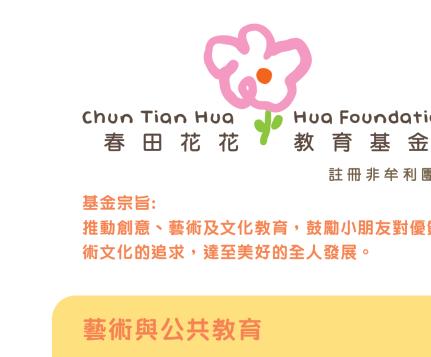



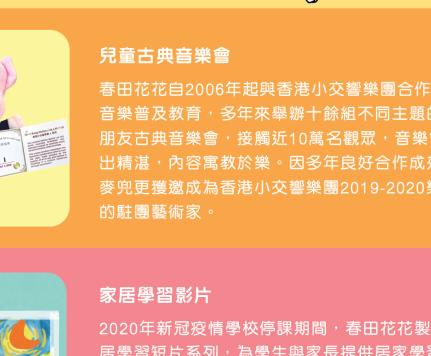















1892 年 3 月 19 日於聖彼得堡公演(距今已 130 年 了,那是麥兜祖父的祖父的年代),這時離芭蕾舞 劇首演還有九個月。在該場音樂會中,多首作品被 聽眾要求安歌, 7 月 16 日在莫斯科的演出也同樣成
彼得堡,但我要確保沒人知道這件事;我怕林姆斯
基 - 高沙可夫和格拉祖諾夫( Glazunov )會收到消
息,然後搶在我之前在他們的作品中用上這樂器。
我預料這種新樂器會引起巨大的反響。」不用說,
像《小鼓手》和《聖誕歌》一樣,《冬日仙境》也 是一首著名的美國聖誕歌。它由鋼琴家和作曲家貝 納德和填詞人史密夫(Richard Smith)在1934年寫 成。很多聖誕唱片都會收錄這首作品。它有著長短 長短的節奏特徵,調子相當輕快,每句都那麼令人 雀躍。有趣的是歌詞中沒有一句提到聖誕節,但雪 人、雪球和到訪的馬戲團等內容,都構成了聖誕節 的景觀。

歡樂的歌曲背後卻有一個悲劇:填詞人史密夫當時
在賓夕法尼亞州斯克蘭頓( Scranton )的西山療養 院醫治結核病。他憶起在故鄉海奈斯代爾 (Honesdale)的中央公園看到兒童玩雪和堆砌雪人 的情景,於是寫了這首作品。第一次錄音是由納殊
的第二首歌曲改編 的,原本只稱為「春季」,但葛利格後來把標題改 為「最後的春季」,並提醒指揮家不應把標題聯想
為美好的春季。因此,當詩人談及這個萬物復甦的 季節時,也注意到了自己生命的有限,唯恐這是他 會度過的最後一個春天。葛利格沒有把原本的歌曲 擴展,只是微妙地更改了一下每段詩的處理方式, 尤其是最後兩段,他把每個弦樂部都拆分開來,逐 一帶入各自的旋律,由四個高音的小提琴部往下分 拆,逐漸營造出美妙感人的效果。

McDull has been hanging up his Christmas stocking ever since his last Christmas show, hoping for another. And you might say that this year Christmas has come early!
We are just into the traditional Advent season, so it is entirely appropriate for McDull to celebrate his sentimental little Christmas at this time.
As usual McDull’s friends in Hong Kong Sinfonietta have lots of seasonal music to set the scene and put you in the Christmas mood. Let’s begin with a medley of some of your famous Christmas carols.

Leroy Anderson is one of America’s best-known light orchestral composers. A local Cambridge Massachusetts boy, he went to Harvard and studied with such luminaries as Walter Piston and George Enescu, but missing out twice on European fellowships, he eventually fell in with the young Arthur Fiedler and his famous Boston Pops (which Fiedler conducted for nearly 50 years), who recognised Anderson’s talent for orchestral arrangements and encouraged him in original composition. Among such favourites as The Syncopated Clock, The Typewriter and Sandpaper Ballet , there are also the Christmas-inspired A Christmas Festival from 1950 (revised, shortened and published in 1952).
This rousing medley of carols is cleverly intertwined in a wonderfully evocative overture-like piece. Which tunes can you recognise? There are no fewer than nine to listen out for: Joy to the World, Jingle Bells, O Come All Ye Faithful, Deck the Halls, Good King Wenceslas, God Rest You Merry Gentlemen, Hark the Herald Angels Sing, The First Nowell, and last but not least, Silent Night
Antonio Vivaldi (1678–1741)Allegro non molto Largo Allegro
We all know that good music stands the test of time; and here is a piece to prove it. Composed nearly 300 years ago, it still sounds as fresh as ever. It is by the prolific Italian composer known as “the red priest”, because of his shock of red hair. His real name was Antonio Vivaldi and he composed something like 750 works including 400 concertos and 94 operas, although during his lifetime there were only a few of his pieces actually published. Perhaps his most famous works are the four violin concertos that describe The Four Seasons. They are the first four concertos of the 12 pieces published as Vivaldi’s Op 8, titled Il Cimento dell’Armonia e dell’Inventione ( The Contrast between Harmony and Invention), in 1725.
Vivaldi even supplied verses to preface each concerto starting with Spring, but – as there are corrections to the poems – it is assumed that he fitted the words to the newly composed music rather than the other way round.
Wrap up warm as we listen to Winter : McDull, have you brought a scarf and coat? Chilly shivering strings open the first movement, the solo violin suddenly shooting off sparks of energy in an effort to get warm. The orchestra gets the idea and surge off as one, as people might run and stamp their feet to alleviate the cold. Much more palatable is being at home by the fireside, the very picture conjured up by the slow middle movement, with flames depicted by the fast strummed strings over which the soloist sings its contented melody. Vivaldi’s Finale returns us to the freezing outside with people slipping and sliding, let alone battling a cold wind and scurrying bows on strings.
From Britain, we cross the Atlantic Ocean now as we speed on our journey to America. We are now in the middle of the 20th century when, in 1941, Katherine Kennicott Davis composed what she first called Carol of the Drum, but which we know now as The Little Drummer Boy, acknowledging that it was based on a Czech carol. It became particularly successful after the Trapp Family Singers (made even more famous after Rodgers and Hammerstein’s last musical The Sound of Music was based on their wartime story) recorded it in 1955, and it has been recorded many times since.
Ralph Vaughan Williams (1872–1958)We travel to Britain now and head back some 250 years before Vivaldi to hear Greensleeves – not a carol but a folk tune. It is supposed to have been composed by a very famous person – King Henry VIII no less, an attribution first published in 1580 (some 33 years after Henry’s death), and Shakespeare mentions it twice in his comedy The Merry Wives of Windsor, from around 20 years later.
We hear it as adapted by British composer Ralph Vaughan Williams, who would have been celebrating his 150th birthday this October just gone. In 1928, Vaughan Williams used Greensleeves for his operatic version of The Merry Wives of Windsor, called Sir John in Love. Six years later Vaughan Williams allowed Ralph Greaves to make a Fantasia on Greensleeves for strings and harp (and optional flute) as it appeared in Sir John in Love, while also using a folk song – Lovely Joan –for the middle section. It has an unmistakable lilt.
The story in the carol tells of a little boy at the crib of Jesus Christ in Bethlehem when the Three Wise Men present the baby with their magnificent gifts. What can the boy give? With Virgin Mary’s approval he plays his drum for Jesus – pa rum pum pum pum as the repeated phrase goes – and the baby smiles at him.
Modest Mussorgsky (1839–1881)
Orchestrated by Maurice Ravel (1875–1937)
As well as carols, another thing very popular at Christmas is the giving of Christmas cards. Our next piece is based as it is on a little drawing which would make a lovely greetings card. It takes us both to Russia by way of France (or perhaps the other way round), because the original musical work inspired by the picture was composed for solo piano by Russian composer Modest Mussorgsky, but it was later orchestrated, famously, by French composer Maurice Ravel.
It was in 1874, after an exhibition of art by Victor Hartmann (who had died the previous year), that
Mussorgsky decided to compose a musical tribute to his late friend. Out of the 400 exhibits on display he chose 10 to make into music, using a promenade theme to indicate the move from one picture to the next. He called his work simply Pictures at an Exhibition . Nearly 50 years later, in 1922, Ravel orchestrated it at the request of Russian conductor Serge Koussevitzky, and his orchestral version has overshadowed Mussorgsky’s original ever since. There are many different orchestrations – and for various different combinations of instruments – but Ravel’s is still the most famous.
We hear the fifth of Mussorgsky’s pictures, the Ballet of the Unhatched Chicks described as “a little picture for the setting of a picturesque scene in the ballet Trilby (1871), where the children from the Imperial Russian Ballet School were enclosed in egg-shell costumes, wearing helmets in the form of canaries’ beaks”. It is fast and light footed, with the orchestra clearly imitating the chicks the children are meant to be imitating.
Franz Xaver Gruber (1787–1863) Arranged by Tom Kennedy
From America to Germany now for a very popular carol: Silent Night. We have already heard a snatch of it in Leroy Anderson’s Christmas Festival but here it stands proudly on its own. With words by priest Josef Mohr (1792-1849) and music by headmaster Franz Xaver Gruber, the original German version, Stille Nacht was first heard at Oberndorf’s St Nicholas Church on Christmas Eve 1818, although the composer and librettist had to fight a legal case for them to be recognised as the writers! It offers a perfect example of the hope of the Christmas message, that everything should be peaceful and is one of the most beautiful of Christmas melodies. Pyotr Ilyich Tchaikovsky (1840–1893)
Mel Tormé (1925–1999) & Robert Wells (1922–1998)
Back to America now and a commercial Christmas song composed just three years after The Little Drummer Boy . Indeed, this is officially known as The Christmas Song even though everybody really knows it by its opening line – “Chestnuts Roasting on an Open Fire” – or its original subtitle, Merry Christmas to You. It was written by the silky-voiced singer Mel Tormé and Robert Wells during a very hot summer, as they were trying to “stay cool by thinking cool”, listing things that made them think cold thoughts. 40 minutes later the song was born, and as recorded (the second time, with string accompaniment) by Nat King Cole in 1946, it became an evergreen hit. It was not long before Mel Tormé himself sang it, recording it four times over nearly four decades. And you do not need me or McDull to tell you how it goes...
In classical music there is nothing more Christmassy than Tchaikovsky’s last ballet, The Nutcracker , based on a story by German author E T A Hoffmann. That is because it is set at Christmas, when Clara is given a nutcracker for Christmas by her Godfather Drosselmeyer, and she falls asleep only to dream of its battle with an army of mice. She defends the nutcracker which then turns into a handsome prince who whisks her away on a magical journey through a seasonal snowstorm to the Kingdom of Sweets where the Sugar-Plum Fairy entertains them with a series of character dances.
These dances make up the whole of the ballet’s second act and Tchaikovsky knew even before the ballet was staged that he had come up with something special. He made a short suite of them which was performed in St Petersburg on 19 March 1892 (over 130 years ago, in the time of
McDull’s great, great, great, great, great grandparents!), nine months before the ballet’s first production. At this concert most of the pieces had to be encored and they achieved similar success in Moscow on 16 July. And even now the suite is just as popular as the full ballet – perhaps helped by some other cartoon characters, courtesy of Walt Disney in his imaginative animated ballet, Fantasia, which is itself over 80 years old, but still a favourite.
Tchaikovsky did have some problems with the frothy nature of Marius Petipa’s revision of Hoffmann’s original tale. He claimed that “I am incapable of setting a mountain of sweets to music” and found the thought of setting music for a dance of the overseeing Sugar-Plum Fairy almost insurmountable. However, by introducing children’s percussion instruments he began to gain inspiration, especially with a new instrument he had discovered in Paris, as we will see.
The Dance of the Sugar-Plum Fairy is one of the famous character dances from the second act. This piece requires an instrument Tchaikovsky knew would astound his audiences: the celesta. He wrote: “I have discovered a new orchestral instrument in Paris, somewhere between a small piano and a glockenspiel, with a divinely beautiful tone. I want to introduce this instrument into the ballet. It is called the Celesta Mustel and costs 1,200 franc. You can only buy it from the inventor, Auguste Mustel, in Paris. I want to order one –send it direct to Petersburg; but no one there must know about it. I am afraid that Rimsky-Korsakov and Glazunov might hear of it and make use of the new effect before I can. I expect a colossal effect from this new instrument.” Needless to say, it characterises the Sugar-Plum Fairy.
(1897–1944)
Arranged by Christian Kolonovits (born 1952)
Like The Little Drummer Boy and The Christmas Song, (Walkin’ in a) Winter Wonderland is a famous American popular Christmas song, penned in 1934 by pianist-composer Felix Bernard and lyricist Richard Smith. It is now an essential part of any Christmas soundtrack, with its jaunty long-short-long-short rhythm to the final line of every verse. Interestingly there is not a mention of Christmas in the lyrics, but the images it conjures up of snowmen and snowbells, the circus coming to town.

The happy nature of the song has a sad side: the lyricist was undergoing treatment for tuberculosis at the West Mountain Sanatorium in Scranton, Pennsylvania, when he remembered seeing children playing in the snow and building a snowman in Central Park of his home-town of Honesdale. He lived to see the success of its second recording, by Guy Lombardo in December 1934 (the first recording had been by Joey Nash and the Richard Himber Orchestra), since when it has been recorded over 150 times, perhaps most successfully by the Andrews Sisters, Johnny Mercer and Perry Como. We hear an orchestral version by Austrian composer Christian Kolonovits.
Right, time for McDull to fly! The Valkyries are nine female warriors on winged horses rescuing heroes’ bodies after they have fallen in battle and taking them back to Valhalla, the home of the Norse gods of the Vikings.
Die Walküre ( The Valkyrie ) is the title of Richard Wagner’s second opera in his epic four-part Der Ring des Nibelungen ( The Ring of the Nibelung ) and actually refers to just one of the female warriors,
Brünnhilde. At the beginning of the third act, her eight sisters are flying to find her after she has fallen out with their father, the god Wotan. Probably his most famous single piece, this is Wagner at his grandest and most exciting. Spare a thought for the players who have lots of notes to negotiate very quickly. McDull has been practising but gets all his digits in a muddle, so he has decided to leave it to the professionals instead, while he just poses in a winged helmet, which no self-respecting Valkyrie is without...
What comes after winter? Spring – and to remind us of that, we hear a piece by Norwegian composer Edvard Grieg. He comes from the original home of the mythology that Wagner used for his Ring Cycle –the land of the Vikings. Although most famous for his only Piano Concerto and also the incidental music to Ibsen’s sprawling play Peer Gynt, amongst his many other works were twelve songs to poems by Aasmund Olavsson Vinje published as his Op 33 in 1880. Most of these are sad and sorrowful, and such a description certainly fits the two he chose to arrange for string orchestra and publish as his Two Elegiac Melodies that same year.
The second string piece was based on Op 33’s second song, originally simply called “Spring”, but Grieg later changed it to “Last Spring”, remarking that conductors should not take the title as an evocation of the beauty of Spring. So, while the poet talks of the beauty of the rejuvenating season, he is also aware of his own mortality and fears that this will be the last spring he will live to see. Grieg does not seek to develop the original songs into anything larger, but subtly changes his treatment of each verse, best heard by the final of the two verses, where he divides each string section and introduces each of the separate parts one-by-one, from four high violin parts downwards, gradually building up a wonderfully touching effect.
But our spring interlude was only a diversion to our main focus which is, of course, Christmas. This festival evokes lots of images, some of which not particularly religious, especially winter scenes from the Northern Hemisphere. Think lots of snow and fir trees, which in Victorian times became an important Christmas staple as the Christmas tree. If you have snow, then it is not long before children make snowmen, and children’s author and illustrator Raymond Briggs brought one snowman to life in his lovely Christmassy tale, The Snowman First published in 1982, Briggs’ illustrations cried out for animation, and Britain’s Channel 4, which had broadcast for the first time in October 1982, seized the opportunity, broadcasting its half-hour cartoon on the story on Boxing Day, 1982. The film became an instant success, made sadder this year because Raymond Briggs recently died.
For the film, Howard Blake composed a wonderful, evocative score, including a song for when the snowman takes flight with the little boy in his hand. As they fly above the snowy landscape, over white fields and quiet cities heading up to Father Christmas’ Lapland, Blake composed a song called “Walking in the Air”. On the soundtrack it was sung by boy treble and St Paul’s Cathedral choirboy Peter Auty, who is now an international tenor. It was later released by Welsh treble Aled Jones, and became a worldwide hit. So if McDull takes hold of the snowman and everyone joins hands with McDull, we can all practise Walking in the Air!
© Nick Breckenfield, 2022 British programme-note writer Nick Breckenfield was the Classical Music and Opera Editor for whatsonwhen.com for 13 years and now works for the Borletti-Buitoni Trust which awards young classical music artists
桂冠音樂總監 Music Director Emeritus: 葉詠詩 YIP Wing-sie
首席客席指揮 Principal Guest Conductor: 柏鵬 ChristophPOPPEN
HKS Artist Associates
何博欣 Vivian HO (2022-2023)
鄺展維 Charles KWONG (2020-2022)
麥兜 McDull (2019-2020)
高世章 Leon KO (2018-2019)
陳慶恩 CHAN Hing-yan (2016-2018)
石家豪 Wilson SHIEH (2015-2016)
朱�� CHU Pak-him (2014-2015)
麥淑賢 MAK Su-yin (2014-2015)
羅詠媞 Wendy LAW (2013-2014)
盧思泓 LOO Sze-wang (2012-2013)
伍宇烈 Yuri NG (2011-2013)
李嘉齡 Colleen LEE (2010-2011)
黎志華 Jason LAI (2009-2011)
楊嘉輝 Samson YOUNG (2008-2009)
伍卓賢 NG Cheuk-yin (2006-2008)
James CUDDEFORD Concertmaster
KIM In-sun Acting Assistant Concertmaster LE Hoai-nam PrincipalSecond Violin CAI Pak-yi CHAN Shaw-nan Sharon Kiann CHOW CHUA Vince Eliezer N. John KRUER
Sally LAW Ambrose LUI LUO Wei-min PANG Hiu-wan POON Ka-mei Camille YANGMin-yu YANGYu-si William LEE LEUNG Ka-chun YEUNG Kin-man Sunny
Elvis CHAN LAU Sum-yin Christina BEAN Ringo CHAN LUNG Kwan-wai Kenny NGAN Sing-on TANG Wing-shuen Rebecca
CHANG Pei-chieh (on Leave) Laurent PERRIN HO Kwok-chee Karey LEE Eun-sol PARK Si-won YIP Chun-hei Eric
Masami NAGAI Santiago COSTA MARTÍNEZ (on Leave) HUANG Tun-pin
長笛 Flute ○上杉晃代 雙簧管 Oboe ◆薛宇曦 福原真美 單簧管 Clarinet ●方曉佳(休假) ○陳秋媛 ■馮智恆 巴松管 Bassoon ◆歐啟詩 田口美奈子
圓號 Horn ●包文慶 東出真澄 岑慶璋 陳珈文
小號 Trumpet ●黃山 文曦(休假)
Akiyo UESUGI
SZE Yu-hey Kenneth Mami FUKUHARA
FONG Hiu-kai Johnny (on Leave) CHEN Chiu-yuan FUNG Chi-hang Eric
AU Kai-see Tiffany Minako TAGUCHI
PAW Man-hing Hermann Masumi HIGASHIDE SHUM Hing-cheung CHAN Kar-man Cheryl
HUANG Shan MANHay (on Leave)
長號 Trombone ●羅澤基 陳學賢 低音長號 Bass Trombone 江子文(休假)
大號 Tuba ●林榮燦(休假)
定音鼓 Timpani ●村本曉洋
敲擊樂 Percussion ●周展彤 小山理惠子
豎琴 Harp ●黃士倫 鍵琴 Keyboard ●朱偉恆
Christopher RODGERS CHAN Hok-yin
KONG Tze-man Jason (on Leave) LAM Wing-tsan (on Leave)
Akihiro MURAMOTO
Chin-tung
KOYAMA
CHEUNG Ho-sing (張浩昇), TUNG Wai-lok Jimmy (董煒樂) Bass Trombone 低音長號
CHIU Hon-kuen Jimmy (趙漢權) Percussion 敲擊樂
VONG Wai-man Raymond (王偉文)
監察委員會
潘燊昌博士(主席)
翟紹唐先生(副主席)
鍾思源醫生(司庫)
周莉莉女士
何汝祥醫生
劉文文女士 劉勵超先生
陳智文先生 徐行悅醫生 黃偉雄先生 阮偉文博士
Dr Patrick S C POON (Chairman)
Mr JAT Sew-tong (Vice-chairman)
Dr CHUNG See-yuen (Treasurer)
Ms Lily CHOW
Dr HO Yu-cheung
Ms LAU Man-man Lisa
Mr Patrick LAU
Mr Stephen TAN
Dr Michelle TSUI
Mr Addy W H WONG
Dr Andrew S YUEN
行政總裁 Chief Executive Officer
楊惠惠 Margaret YANG
總經理 General Manager
李浩儀 LEE Ho-yee
行政秘書 Executive Assistant to CEO
何淑娟 Rose HO
會計經理 Accounting Manager
李靄玲 Judith LEE
行政統籌 Administrative Coordinator
柯玉嬌 Noel QUAH
行政助理 Office Administrator
楊瑞遠 YANG Jui-yuan
莫皓明 Amanda MOK
市場及業務拓展經理
Marketing & Development Manager
何珮鈴 Pauline HO
助理市場經理
Assistant Marketing Manager
袁穎芝 Christine YUEN
市場及業務拓展主任
Marketing & Development Officer
柯娉庭 Pantane OR
Honorary Gover nors
Mrs Alice KING
Mr SHIH Wing-ching
Ms Serena YANG
Honorary Company Secretary
Tricor Corporate Secretary Limited
Honorary Orthopaedic Surgeon DrDanHOOLEY
Orchestra & Programme
Orchestra Manager 陳成美 Marylu CHAN
Programme Manager 丘靄雪 YAU Oi-suet Icy
Special Projects Manager 黃紫菱 Athena WONG
Assistant Orchestra Manager 黎希潼 Carvina LAI
Projects & Programme Officer 林海欣 Hayley LAM 製作經理 Production Manager 陳冠宏 Eddie CHAN
當代音樂研究 Contemporary Music Research 鄺展維 Charles KWONG
藝術行政主任 Arts Administration Officers
羅希寧 Kening LAW 朱嘉懿 Denise CHU 黎舜喬 Jeffrey LAI



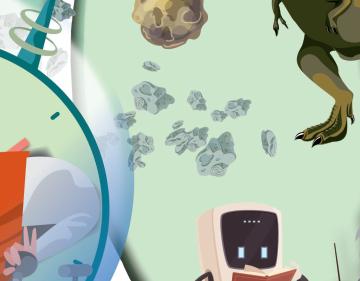
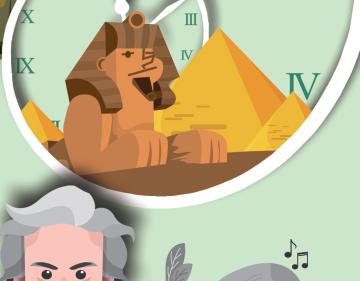
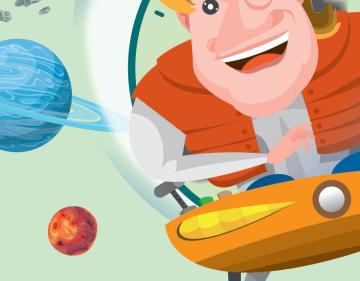









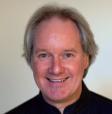



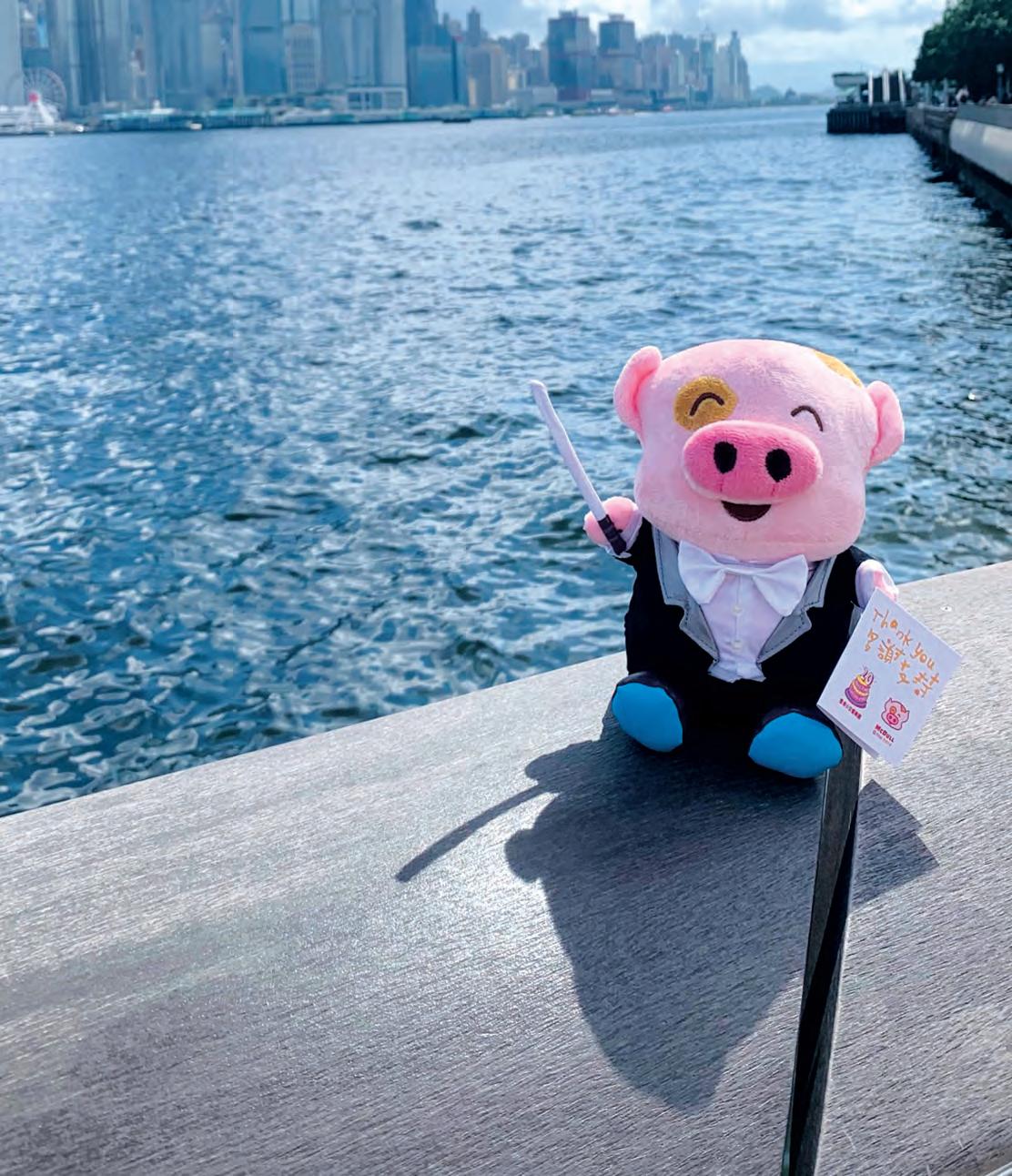





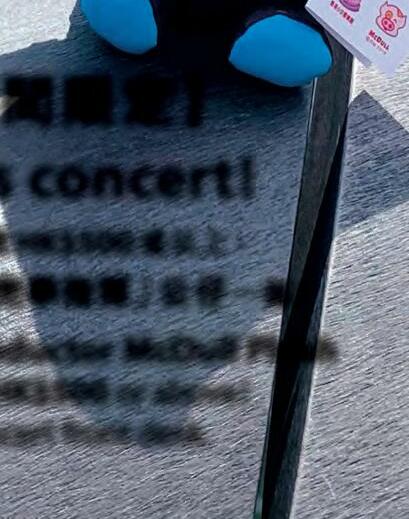


















Thank you to the following donors and organisations who have supported us with a donation in the past year.
贊助人及捐款者
MegaSTAR Patrons (HK$500,000 and above)
• 潘燊昌博士及夫人 Dr & Mrs Patrick S C Poon
• 施永青基金有限公司
Shih Wing Ching Foundation Ltd
SuperSTAR Patrons (HK$100,000 to HK$499,999)
• 亞洲保險有限公司 Asia Insurance Company Ltd
• 北山堂基金 Bei Shan Tang Foundation
• 陳鋈鋆先生 Mr Chan Yuk-kwan
• 周莉莉女士 Ms Lily Chow
• 冼為堅基金有限公司 Sin Wai Kin Foundation
STAR Donors (HK$10,000 to HK$29,999)
•Dr Thomas H C Cheung, MH, FCII
• 鍾思源醫生 Dr Chung See-yuen
• 鍾陳碧璋女士Mrs Shirley Chung
•Dr David Fang
•Mr Eugene Fung
• 何汝祥醫生 Dr Ho Yu Cheung
Donors (HK$1,000 to HK$9,999)
•BELIEVING MUSIC CAN
• 加拿大琴行 Canada Piano Co
•Mr Christopher Chan
• 陳永光先生 Mr Chan Wing Kwong
• 陳燕婷
• Ms Joycelyn Choi
•Mr C Y Chow
•ditto ditto
•In Remembrance of Esther
•KiKi the Cat
• 許文傑先生 Mr Hui Man Kit
•Mr Leon Ko
•Mr & Mrs Patrick Lau
•Mrs Sophia Kao Lo
•Ms Sophie Martineau
•Cissy & Robert Tang
STARplus Donors (HK$30,000 to HK$99,999)
•Cadence, Zoe & Phoebe • 陳嘉何醫生夫人
• 陳求德醫生及夫人 Dr & Mrs Chan Kow Tak
•Lowell & Phyllis Chang
•Chiu Music Fund • 翟紹唐先生 Mr Jat Sew-tong • 關卓然先生 Mr Kwan Cheuk Yin William • 林育義醫生 Dr Lam Yuk Yee Paul
•Sophie & Chloe Ma • 謝智剛教授 Prof C K Michael Tse • 徐行悅醫生 Dr Michelle Tsui • 黃偉雄先生 Mr Addy W H Wong • 多位無名氏 Anonymous
•Mr Augustine Wong
•Mr Frank Wong
• 阮偉文博士 Dr Andrew Yuen
• 多位無名氏 Anonymous
•Dr & Mrs Arthur Van Langenberg
• 林敏儀女士
Ms Man Yee Twiggy Lam
•Ms Cathy Lau Sau Kwan
•Ms Lee Yik Shuen Heidi
• 吳志強先生
•Dr Yvonne Ou
•Ms Ng Sau Pik
• 潘綺勤女士
•Mr Giovanni Salce
•Ms Jojo Sin
• 德仔 sir
•Mr Leland Sun
•Dr Nelson Tang
•Mr Paul Tsang
•Mrs Mabel Tsui
•Ms TT Tsui
•Simon Tsui & Family
• 王偉堯先生 Mr Wang Weiyao
• 王騰峰先生 Mr Wong Tang Fung
•Ms Katherine Yin
• 多位無名氏 Anonymous
Diamond Donors (>HK$100,000)
•CLP Holdings Limited
• 潘燊昌博士及夫人
Dr & Mrs Patrick S C Poon
• 芝蘭基金會 Zhilan Foundation
Jade Donors (HK$50,000 to HK$99,999)
• 亞洲保險有限公司
Asia Insurance Company Ltd
• 阮偉文博士 Dr Andrew Yuen
• 多位無名氏 Anonymous
Ruby Donors (HK$30,000 to HK$49,999)
• 孫永輝施熙德伉儷
Edith & Stephen Sun
Opal Donors (HK$1,000 to HK$9,999)
•Mr Chan Kwan Ho
• 紀念劉葉珍女士
•Prof Yvonne Liao
• 陳鋈鋆先生
Mr Chan Yuk-kwan
• 周莉莉女士 Ms Lily Chow
• 鍾陳碧璋女士 Mrs Shirley Chung
• 潘燊昌博士及夫人
Dr & Mrs Patrick S C Poon
• 冼為堅博士
Dr David Sin Wai-kin
• 唐柏泉醫生
Dr Tong Pak Chuen Patrick
• 謝智剛教授
Prof C K Michael Tse
• 多位無名氏 Anonymous
Pearl Donors (HK$10,000 to HK$29,999)
•Mr Iain Bruce
• 張德賢博士伉儷
Dr & Mrs Douglas Cheung
•Mr David C L Chiu
• 鍾思源醫生 Dr Chung See-yuen
•Ms Fiorella Fong
• 何汝祥醫生 Dr Ho Yu-chueng
•Miss Lisa Lau
•Mr & Mrs Patrick Lau
•Mrs Florence Ng
•Ms Leta Ng
•PLC Foundation
• 沈昊翔先生 Mr Shum Ho Cheung
• 九龍倉集團有限公司
The Wharf (Holdings) Limited
• 多位無名氏 Anonymous
• 廖炳輝醫生 Dr Liu Bing Fai
• 吳榮奎先生 Mr Ng W F Nicholas
• 魏玉華小姐 Ms Winnie Ngai
•Ms Jojo Sin
GRAND Patrons of “2022/2023 Fundraising
Recital - Piano Soirée with François-Frédéric Guy”
•Mr Y K Chan
•Ms Lily Chow
•Dr Chung See-yuen
•Dr Ho Yu-cheung
•Mr Jat Sew-tong
•Mrs Sophia Kao Lo
•Miss Lisa Lau
•Mr & Mrs Patrick Lau
•Dr & Mrs Patrick S C Poon
•Dr Michelle Tsui
•Mr Addy WH Wong
•Dr Andrew S Yuen
• Mr Jimmy Yau
• 多位無名氏 Anonymous
感謝以下各機構對香港小交響樂團一直的支持!
Hongkong
Leisure and Cultural Services Department
• 邁騰路通有限公司 Maestro GT Limited
• 荷蘭駐香港及澳門總領事館
Netherlands Consulate General in Hong Kong and Macao
•MOViE MOViE
• 通利琴行 Tom Lee Music Co Ltd
•Mr Jiˇri Votruba

